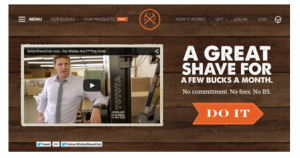We have reached a content peak and the context of how we learn about, access and make choices is now nearly as important as the quality of the content.
“Content is King-er” concluded a leading media industry prognosticator in the keynote address at the recent Media Insights and Engagement Conference, after he took the audience through a whirlwind tour of the changes in the ecosystem over the past year. He was doubling down on the oft-made claim that content is king with a purposeful grammatical error.
Of course, we have all heard about the importance of quality content in the fight for viewers and the claim to the crown has become almost standard industry doctrine. One needs to look no further than the cult following of Game of Thrones, Breaking Bad, This is Us, and The Handmaid’s Tale to understand the impact of quality on a network or streaming service.
While from the main stage, the content is king claim resonated, it was made to sound hollow as the conference unfolded over the next two and half days as session after session of media and research executives laid out their challenges and strategies to capture eyeballs today. Two interrelated realities emerged from the myriad presentations: We have reached a state of peak content and, in a world of good content abundance, the context of how we learn about, access and make choices is now nearly as important as the quality of the content.

In a world of peak content, we are overwhelmed with choices
There is too much out there to watch. Every year, new shows make their debut and those already underway progress with new seasons. It is clear that content is rapidly accumulating, while the amount of time in a day, of course, remains the same. Creators, both traditional networks and streaming services alike, take notice.
Lately, the term “Peak TV” made its way into industry parlance, finding as its metric the magic number of 500 scripted original series. According to FX Network’s annual study, we’ve arrived. In 2018, 495 scripted shows aired in the United States. That’s only slightly more than 2017’s 487 shows, but an increase of more than 100 percent since 2009, when just over 200 shows aired. If we broaden the scope beyond the United States and consider international programming (Peaky Blinders, anyone?), that number easily climbs to over 600 shows. To experience a mere 10 percent of last year’s available content, one would have had to watch at least 49 seasons of TV.
In a world so thoroughly inundated with content, it turns out that “good enough is good enough” for most people. While the industry may recognize miniscule distinctions between content and crown the best-of-the-best at awards shows, the average viewer is not a critic and, as such, a great deal of simply good and even mediocre content is “good enough” to get onto their watch list. Overabundance of choice diminishes the role of ambiguous and subjective quality measures in influencing what viewers decide to watch, and instead emphasizes the myriad ways in which people come into contact with content.

Context is key to discovery and tune-in
Today’s media landscape has turned the old saying “beggars can’t be choosers” on its head and made the converse true – choosers have become beggars, pleading for an easier way make decisions. On many occasions, I long for the days of three or four networks and one remote control. While choice was almost laughingly narrow by today’s standards, the process of discovering, accessing, and choosing what to watch was easy.
Today, by contrast, I sometimes feel that I need the help of a computer scientist and a staff of content screeners to get a suitable program to play on my screen. I still have three remotes in my living room (Samsung, Fios, and Apple TV) and when I turn on the TV, I am met with a home screen with dozens of apps, many of which I subscribe to (Netflix, Prime, Hulu, HBOGo, YouTube and Spotify, among others). Yet, with all this choice, I most often go to my phone to check my social networks and conduct searches to decide what to watch.

A framework to understand context
Winning the war for eyeballs for media owners, platforms and brands requires not only great (or good enough) content, but a clear understanding of the context in which viewers make choices.
This is the starting point to making commercial choices about which avenues in the path-to-viewing to try to influence. Any contextual framework should include four areas:
Who are you viewing with? – A father watching with his daughter would make a different choice than he might with his friends. You choose different content to watch with your toddler than you do with your spouse, just as you would not take your clients for a drink at the local dive bar.
What access do you have? – What device, bandwidth and usage rights do you have? Do you prefer watching movies in theaters, through a cable package on your smart TV, or streaming Netflix on a mobile device? A phone on 4G streaming YouTube vs OTT on a smart TV with a cable package provide very different experiences.
How does it fit into your day? – Where does viewing fit into your life in terms of time of day, time available, and location? Are you waiting for your Uber to arrive or are you at home Friday night in the family room? Maybe you are streaming game highlights on the subway, scrolling through news clips between meetings, or enjoying a weekly movie night with your closest friends.
How salient are your program choices? – Did a launch campaign pique your interest in the latest action movie; did a friend convince you to watch a beloved comedy; or are you just searching on your phone? Everyone has a show that they have “been meaning to get to” after reading about it online, seeing a trailer, and/or hearing about it from friends and coworkers. The most salient programs will be purposefully sought out or at least recognized and selected when viewers see their names onscreen. Those without salience however, can remain in the back of people’s minds, perpetually waiting for viewers to “get around to it.”
Salience can be understood from two dimensions – memory and attention. Memory salience is the mental storehouse of all past input we have received about a particular subject, whether we can consciously recall it or not. Attention salience, on the other hand, is driven by our in-the-moment reaction to cues and stimuli – most commonly advertising. Of course, these two phenomena do not operate in isolation, as our memories influence the way we react to stimuli when brought to our attention, and subsequently these reactions either reinforce or challenge our existing memories.

Content may be king, but context is queen
Great stories well-told have always moved people. They imbue our lives with meaning and help us to make sense of how the world works. Albeit on a much smaller scale, great commercial entertainment does the same. So, while I am not ready to take the king’s crown away from content just yet, I can comfortably say that context is queen. In media, as on a chessboard, the queen is crucial. Smart media owners, platforms and brands realize that winning the war for eyeballs requires understanding and influencing the context in which media choices are made.
Opinions expressed in this article are those of the guest author and not necessarily Marketing Land. Staff authors are listed here.
Marketing Land – Internet Marketing News, Strategies & Tips
(63)
Report Post







